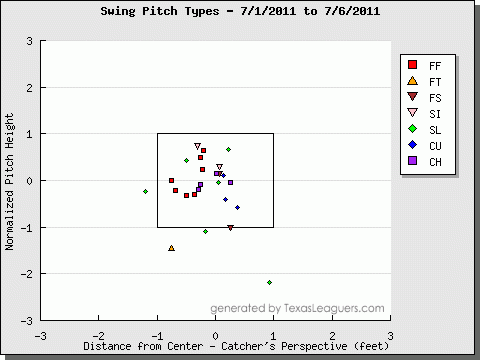Although the Denard Span-for-Drew Storen talks dominated the weekend, ultimately,
like so many other deadline deals, nothing came to fruition.
For the most part, standing pat is a good thing. The Twins will keep their
affordable center fielder/lead-off hitter as Span should give the lineup a much
needed injection of vitamins O, B and P when he arrives on Tuesday in Anaheim. On
the other hand, the front office missed an opportunity to buttress their
bullpen with right-handed relievers.
Part of the reason why Bill Smith left the swap meet without anything was
because the market had a substantial markup on relievers. Arms like Koji
Uehara, Mike Adams and Brad Ziegler were moved at fairly substantial costs. It
is hard to envision the organization making a significant package for pitchers
they would control for two years at most.
The Rangers traded a starting pitcher, Tommy Hunter, along with the
powerful Chris Davis to obtain Uehara. Later in the day, the Rangers moved their
fourth-ranked prospect by Baseball America, pitching Robbie Erlin, along with
Frisco (AA) teammate Joe Wieland, to the Padres for Adams. Likewise, the A’s
moved Ziegler – a player whom was supposedly not going to require a king’s
ransom to acquire – and landed the slugging Brandon Allen and the left-handed
reliever, Jordan Norberto.
The Star Tribune’s Joe
Christensen said that the front office called the Blue Jays and sought
ex-Twin Jon Rauch, however, that deal never progressed. Given the fact that the
Jays had just moved both Jason Frasor as well as Octavio Dotel in addition to
the going rate of relief help, Toronto was likely seeking a sizeable return for
Rauch.
So the Twins exited the non-waiver portion of the trade deadline without
addressing what might be their biggest
area of need. Smith agreed that the emphasis of the day was trying
to find help for the bullpen but was not overly concerned:
"That's been a target. We've been trying to add a piece or two in that bullpen that can help stabilize things, a little bit more experience, and unfortunately so far we haven't been able to do it. But again, the next phase of this starts this week with the waivers, and we'll be ready for that."
While Smith and company’s overall trade track record is spotty at best,
they have been successful at bringing in help through the waiver wires. They
originally grabbed Rauch in 2009 from the Arizona Diamondbacks and traded Kevin
Mulvey for him. This past season they claimed the left-handed Brian Fuentes and
flipped Loek Van Mil to Anaheim.
One thing to keep in mind is that from now until the August 31 waiver deadline, the Twins have 15 games against AL Central opponents –
including nine against the Tigers and Indians. There is plenty of room to gain
or lose ground within the next 31 days. If the team is able to make strides,
the opportunity to add a bullpen arm still exists as teams like Oakland,
Toronto and Tampa Bay will start funneling players through the waiver system.
Clearly, talent acquisition can be had post-July 31 and it is usually
less expensive. But what happens if the Twins shit the bed completely in that
time?
Selling is a bit more of a tricky proposition at the waiver deadline. Say
the Twins manage to go 0-for-9 in those games, burying them deep in the bottom
of the standings. They could send guys like Delmon Young, Jason Kubel, Carl
Pavano or even Michael Cuddyer through the waivers. If or when a team claims
them, the front office now is forced to negotiate within a 24-hour window with
just one party instead of multiple teams. Suddenly, the return for the player
has been decreased. If you look back at Baseball America’s Trade Central –
dating back to 2004 – Jason Bay, then in AAA with the Padres, is about the only
noteworthy return. In that sense the front office is gambling heavily that this
below-.500 team is a legitimate contender.
Overall, the Twins did not improve their team at the deadline. At the same
time, they didn’t hurt it either. Span and Justin Morneau should be returning
in the next few weeks giving the offense a boost. They hung on to Kevin Slowey
who could be rotation insurance or even a temporary right-handed arm out of the
bullpen until someone else can be found.
All in all, the deadline silence is a reaffirmation that the club believes
it can win the AL Central with the current assortment of players.
****













